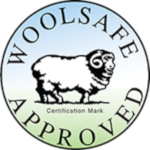How are Viscose Rugs Made?
A viscose rug is a rug made from wood pulp and cotton by-products. Viscose rugs are as soft and shinny as silk, but silk rugs are 10 times more expensive than viscose.
Viscose Rugs Are Known by Several Different Names...
-
Faux Silk
-
Art Silk
-
Man-made Silk
-
Fake Silk
-
Rayon
-
Banana Silk
-
Bamboo Silk
-
Lyocell
-
Ramie
Many times these rugs are sold at prices that make people believe they are buying a genuine silk rug, when in fact it is an artificial silk rug. Sometimes viscose is used as a filler, but still labeled as authentic silk. Why is that important?
How a rug is made will determine several factors
-
Whether it is a good value for your buck.
-
How long the rug will last.
-
How it will look after use, that is after a period of time that people have walked on it and pets have urinated on it.
-
How it cleans up.
The biggest advantage of owning a viscose rug is the softness. Viscose rugs are unbelievably soft, it feels like silk and very popular with rug designers, interior designers, and rug manufacturers. Because they are cheaper to make, yet yields a big profit when sold as real silk.
People buy viscose rugs because of the way they look and feel. Many interior designers choose it for a certain look or affect they are creating. However, there are more disadvantages to viscose rugs.
There are disadvantages to owning viscose or faux silk rugs

1. softness
The softness of the rug is achieved through chemical processing which makes the fiber very fragile and easy to distort. Viscose or fake silk is one of the most weakest fibers to date.
2. Shedding
Because the fibers are weak, normal everyday foot traffic can leave a viscose rug looking as if it was clawed by a cat.
Also, improper vacuuming can cause the fibers to become frizzy and uneven. If the vacuum is too strong or has a beater bar that grabs the fibers the problem can become worst.
3. Bleeding
Viscose rugs doesn’t hold dye well and tend to bleed if they get wet, whether from spills, pet urine or cleaning.
“The durability, clean-ability, and appearance retention of viscose is far lower than its more entrenched counterparts of wool and silk, especially when wet.” Rug Insider
It is important to note that when having your viscose rug cleaned that it is done my an experience rug cleaner.
A professional rug cleaner will test for colorfastness (whether the dyes are stable) before washing to determine if the rug should be submersion washed or low moisture (surfaced) cleaned. Cleaning a viscose rug is considered to be an advanced cleaning procedure.
One important thing to note here is if there is pet urine in your viscose rug, the only option to removing the urine and the odor is to submersion wash.
3. Yellowing
Viscose rugs can become yellow over time, especially in high humidity areas, or if the rug becomes wet and not dry properly. “…viscose rug naturally turn yellow when wet…” Mary Cockrill. This can happen with spills as well as with cleaning.
Which is why it is important to use a professional rug cleaner who will use the proper cleaning procedure, the proper cleaning solutions and get the rug dry as quickly as possible.
4. Matting
After a viscose rug have been wet, it can become matted and stiff either from spills or improper cleaning. Another reason to use a profession rug cleaner, who will use special grooming techniques and brushed to retain that softness that you love and the reason you brought the rug.
These are important facts you need to know if you choose to purchase a viscose rug. If you fall in love with a viscose rug and must have it, you might consider placing it in a area that doesn’t get much traffic, like a guess bedroom. The family room or kitchen may not be the best choice for a viscose rug.
Remember cleaning should only be done by an experience rug cleaner and even then your viscose rug will never look as good as it did when it was new.
If you have any questions about viscose rugs or any other rugs give us a call and we’ll be happy to help.







